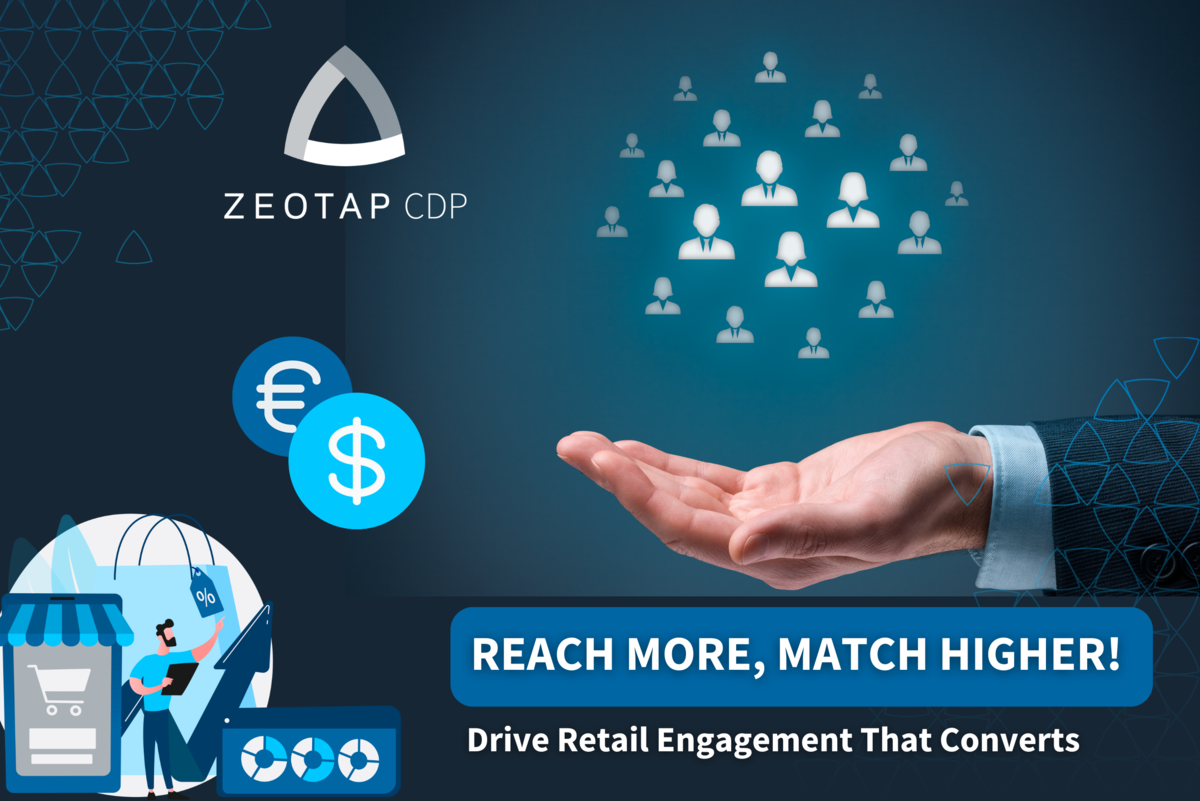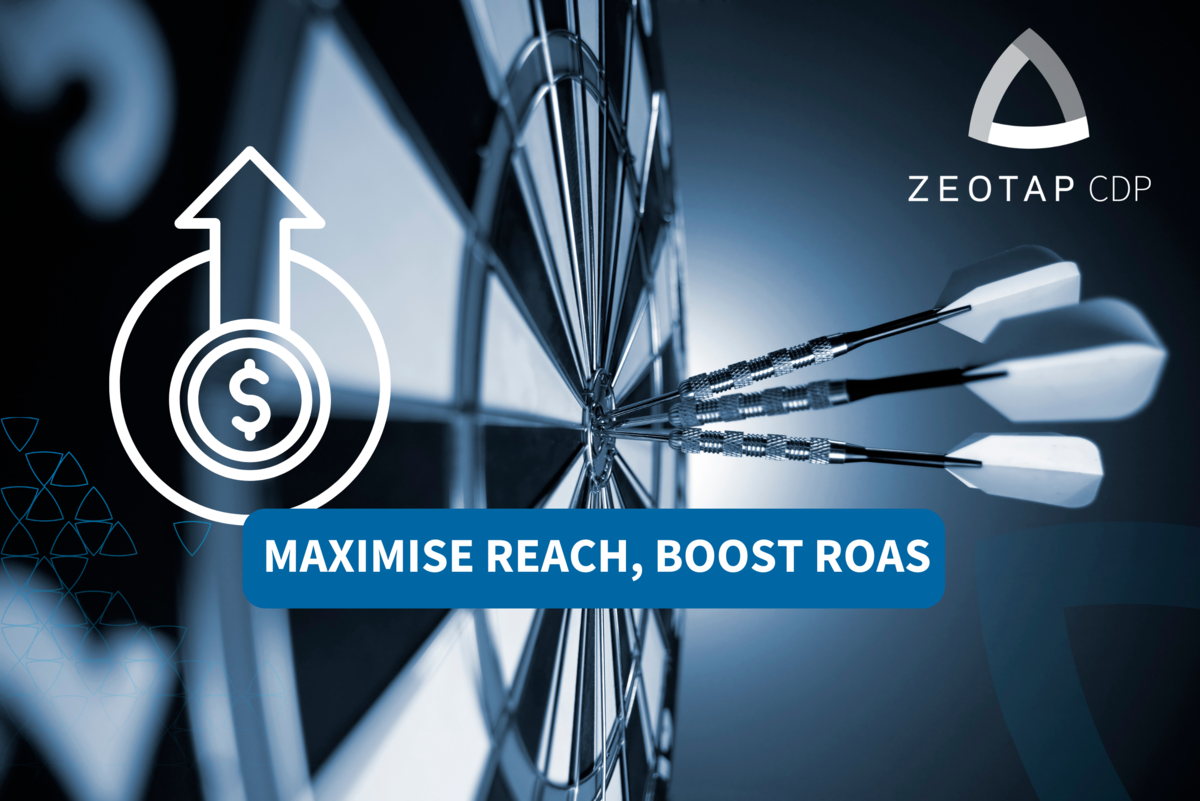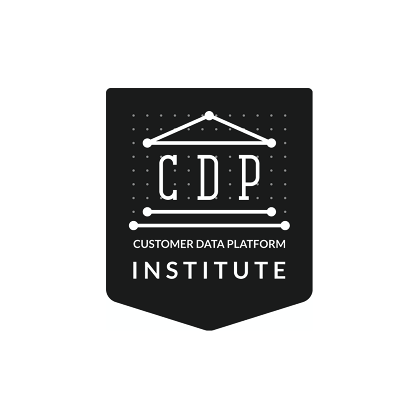A data-driven approach empowers retailers to develop strategies that yield better results by leveraging insights from actual customer behaviors. Achieving this approach necessitates a comprehensive, 360-degree view of customers, which can be easily acquired with a Customer Data Platform (CDP). In this article, we will explore the top five use cases where CDPs play a pivotal role in achieving improved business outcomes.
Retail Market Overview and Why Retailers Need a CDP
The retail industry has faced numerous challenges in recent years, including balancing physical and online presence and adapting to changing in consumer attitudes. As customers’ shopping journey became more and more seamless, the ability to quickly access and use real-time data became essential for retailers’ success.
Fortunately, the retail sector is inherently data-rich. Retailers have an incredible amount of first-party customer data that can be leveraged to capitalise on personalisation and loyalty programmes if the data is collected, unified, segmented and activated in the most efficient way to gain a complete view of customer buying habits and preferences.
To stay ahead of the curve, therefore, retailers need to adopt tools that enable them to have a comprehensive understanding of customer behavior and enable the evaluation and activation of the data. This is where Customer Data Platforms (CDPs) come into play.
CDP Use Cases for Retail Industry
Customer Data Platforms (CDPs) are crucial tools for retail brands when it comes to:
- Collecting customer data from an increasing number of data sources.
- Analyzing customer data to build effective data-driven strategies.
- Maintaining strict compliance and privacy standards while handling customer data.
- Activating customer data to deliver personalized experiences across every marketing and service channel.
Besides understanding the core functionalities of a CDP, it is important to capture its real value in a business strategy. Below, we will illustrate concretely how a CDP can be instrumental in achieving improved results for the following top 5 retail use cases:
- Recover abandoned carts
- Increase Average Order Value
- Re-engage Inactive Users
- Retain Customers and Improve Loyalty
- Suppress Existing Customers from Irrelevant Ads
1. Recover Abandoned Carts
Retailers face challenges in understanding customer behaviour and recovering lost sales due to cart abandonment. Personalised follow-up strategies, like email reminders and incentives, help re-engage customers and recover lost sales.
Why It Matters: Analysing customer data can uncover pain points and cart abandonment patterns. Personalised follow-ups based on behaviour and demographics can drive conversions and recover lost sales. Understanding these insights is crucial for retailers to craft effective strategies, making a CDP invaluable.
How to leverage it: A CDP can use user behaviour data to create comprehensive customer profiles, which can be used to craft personalised journeys. With automated triggers, retailers can enable strategic re-engagement across multiple channels, driving conversions and fostering lasting customer loyalty.
For a specific example read the Breuninger case study which led to a remarkable 15% increase in conversion rates and an impressive re-engagement of 42% of inactive users.

2. Increase Average Order Value (AOV)
Retailers aim to boost AOV by encouraging customers to add more items to their shopping carts. Personalised product recommendations enhance the shopping experience, leading to higher conversions and AOV.
Why It Matters: Offering personalised incentives like discounts or free shipping can create opportunities for upselling and cross-selling strategies. By leveraging algorithms and customer data through a CDP, retailers can tailor recommendations to individual preferences, driving exploration of additional items and increasing AOV.
How to leverage it: A CDP can seamlessly consolidate user behaviour and purchase data to create nuanced customer profiles. These profiles can be enriched with diverse data points, comprising both Customer and Non-Customer Entity Data, including product catalogues and order data. High-value customers can be effortlessly identified and segmented, facilitating personalised offerings through precise cross-channel targeting strategies.
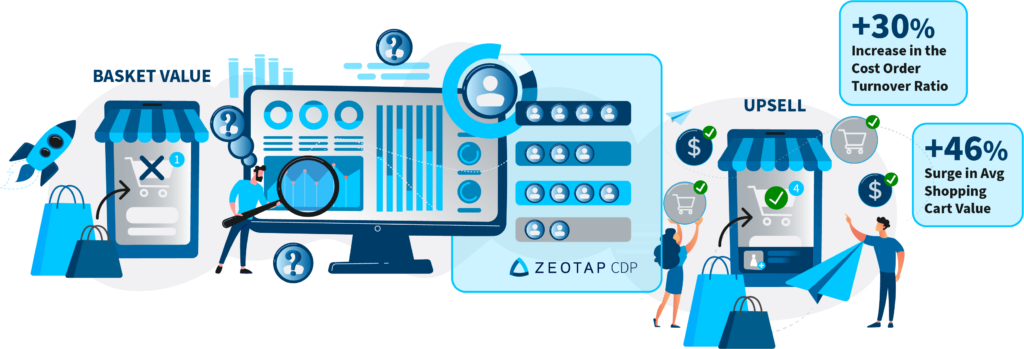
3. Re-engage Inactive Users
Understanding why users become inactive is crucial for retailers. Reconnecting with abandoned cart customers and inactive users is essential to prevent churn and regain lost revenue.
Why It Matters: Examining customer data to identify reasons for inactivity can help in deploying targeted campaigns that offer incentives or personalised recommendations, encouraging customers to complete purchases. Leveraging a CDP to identify high-intent actions can trigger messages to push inactive customers toward conversion.
How to leverage it: A CDP can aggregate user behaviour and purchase data, offering a 360-degree customer view. By leveraging this, it is possible to identify the reasons for inactivity and deploy targeted campaigns, driving up to a 20% increase in conversion rates. By analysing inactive user browsing behaviour, a CDP enables personalised recommendations, resulting in an average 35% of inactive users returning to make purchases. This approach not only prevents churn but also revitalised lost revenue, showcasing the power of data-driven re-engagement strategies.
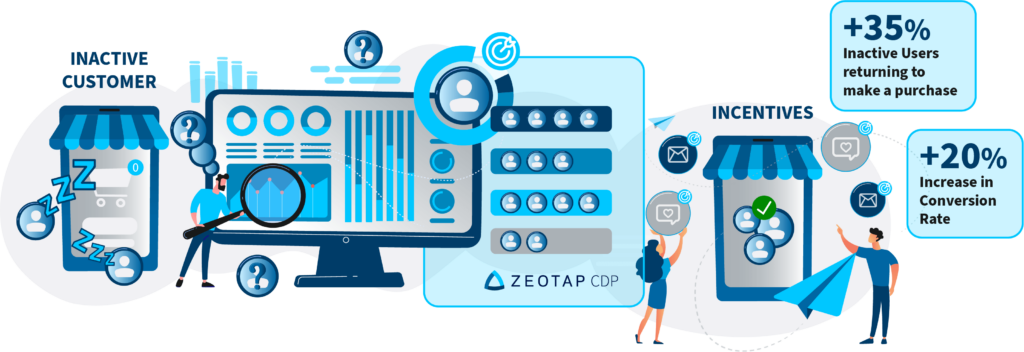
4. Retain Customers and Improve Loyalty
Retailers often prioritise repeat purchases over genuine customer loyalty with outdated programs. However, by tailoring digital content and experiences, along with personalised incentives, they can foster stronger bonds and enhance long-term loyalty.
Why It Matters: Retail shoppers seek convenience but may find the shipping process daunting. Loyalty programs, powered by tailored content, elevate the shopping experience and drive repeat purchases. With a CDP, retailers can track and leverage customer data to deliver relevant messages across channels, enhancing customer retention.
How to leverage it: By seamlessly syncing data across online and offline touch points, a CDP breaks data silos, offering a unified view of each customer and deeper insights into customer behaviour. The same can be used to craft real-time, personalised communications. The results can be a 15% increase in Customer Lifetime Value compared to the previous year and a 10% decrease in the Churn Rate.

5. Suppress Existing Customers from Irrelevant Ads
Retailers strive to enhance marketing effectiveness by ensuring ads are relevant to existing customers. Outdated systems often lead to annoyance with irrelevant ads, wasting ad spend and reducing future effectiveness. Suppressing existing customers from irrelevant ads is crucial to enhance satisfaction and campaign impact.
Why It Matters: Personalised strategies, powered by a CDP and advanced algorithms, can enable retailers to exclude customers who have already purchased specific products from receiving redundant ads. Targeted messages deployed when customers are most receptive drive additional purchases without overwhelming them with irrelevant ads.
How to leverage it: With a proper ID Strategy that integrates online and offline data a CDP can identify unique customer profiles for suppression. It is easy to create suppression audience segments to exclude them from digital advertising campaigns.
For a specific example read the Virgin Media O2 case study which led to a 38% increase in Click-Through Rate (CTR) and a 20% decrease in Cost Per Order (CPO) across channels.

Zeotap CDP for the Retail Industry
CDPs as a powerful tool for managing customer data, are not all the same. CDPs can vary in terms of their capabilities, ease of use, and cost. Additionally, not all CDPs are equipped to handle the same types of data or to integrate with the same martech stack.
Zeotap CDP is an easy-to-use platform, made for marketers, that ensures a frictionless deployment and quick value impact. It empowers brands to integrate, unify, segment and orchestrate customer data now and in the cookieless future, all while putting consumer privacy and compliance front-and-centre. It makes it easier than ever for businesses to gain commercial success with minimal effort, thanks to an intuitive interface which prioritises simple use cases that drive results in only 8 weeks. On top of that, Zeotap CDP provides powerful identity stitching strategies so marketers can build segments without coding or technical skills required on Google Cloud Platform which offers the advantages of low latency and cost efficiency, all wrapped up by their commitment to privacy above all else!
